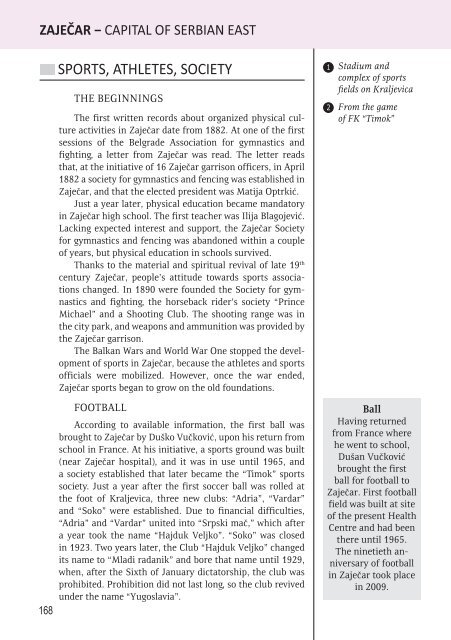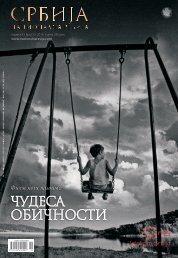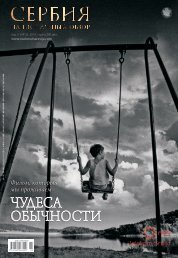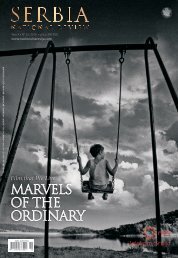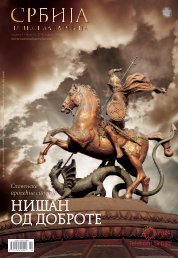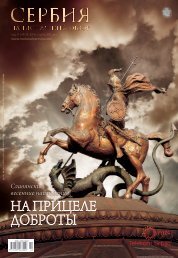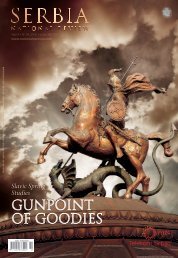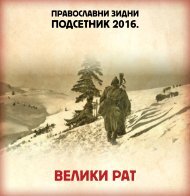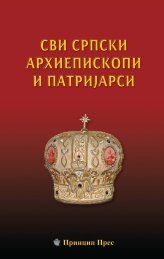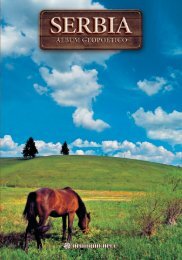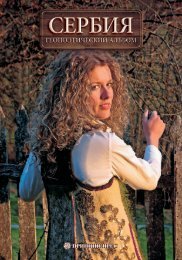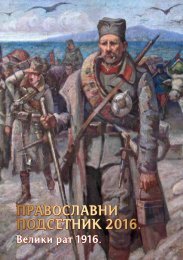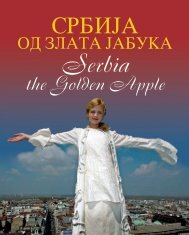Zajecar - engleski - niska rezolucija
Create successful ePaper yourself
Turn your PDF publications into a flip-book with our unique Google optimized e-Paper software.
ZAJEČAR − CAPITAL OF SERBIAN EAST<br />
SPORTS, ATHLETES, SOCIETY<br />
THE BEGINNINGS<br />
The first written records about organized physical culture<br />
activities in Zaječar date from 1882. At one of the first<br />
sessions of the Belgrade Association for gymnastics and<br />
fighting, a letter from Zaječar was read. The letter reads<br />
that, at the initiative of 16 Zaječar garrison officers, in April<br />
1882 a society for gymnastics and fencing was established in<br />
Zaječar, and that the elected president was Matija Optrkić.<br />
Just a year later, physical education became mandatory<br />
in Zaječar high school. The first teacher was Ilija Blagojević.<br />
Lacking expected interest and support, the Zaječar Society<br />
for gymnastics and fencing was abandoned within a couple<br />
of years, but physical education in schools survived.<br />
Thanks to the material and spiritual revival of late 19 th<br />
century Zaječar, people’s attitude towards sports associations<br />
changed. In 1890 were founded the Society for gymnastics<br />
and fighting, the horseback rider’s society “Prince<br />
Michael” and a Shooting Club. The shooting range was in<br />
the city park, and weapons and ammunition was provided by<br />
the Zaječar garrison.<br />
The Balkan Wars and World War One stopped the development<br />
of sports in Zaječar, because the athletes and sports<br />
officials were mobilized. However, once the war ended,<br />
Zaječar sports began to grow on the old foundations.<br />
FOOTBALL<br />
According to available information, the first ball was<br />
brought to Zaječar by Duško Vučković, upon his return from<br />
school in France. At his initiative, a sports ground was built<br />
(near Zaječar hospital), and it was in use until 1965, and<br />
a society established that later became the “Timok” sports<br />
society. Just a year after the first soccer ball was rolled at<br />
the foot of Kraljevica, three new clubs: “Adria”, “Vardar”<br />
and “Soko” were established. Due to financial difficulties,<br />
“Adria” and “Vardar” united into “Srpski mač,” which after<br />
a year took the name “Hajduk Veljko”. “Soko” was closed<br />
in 1923. Two years later, the Club “Hajduk Veljko” changed<br />
its name to “Mladi radanik” and bore that name until 1929,<br />
when, after the Sixth of January dictatorship, the club was<br />
prohibited. Prohibition did not last long, so the club revived<br />
under the name “Yugoslavia”.<br />
168<br />
1<br />
2<br />
Stadium and<br />
complex of sports<br />
fields on Kra lje vi ca<br />
From the game<br />
of FK “Ti mok”<br />
Ball<br />
Having returned<br />
from France where<br />
he went to school,<br />
Du šan Vuč ko vić<br />
brought the first<br />
ball for football to<br />
Za je čar. First football<br />
field was built at site<br />
of the present Health<br />
Centre and had been<br />
there until 1965.<br />
The ninetieth anniversary<br />
of football<br />
in Zaječar took place<br />
in 2009.


